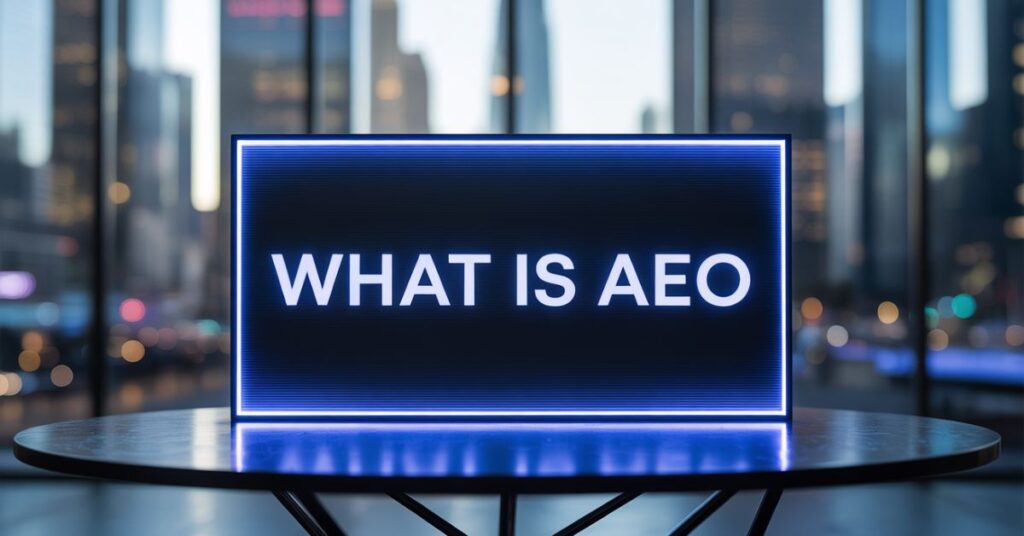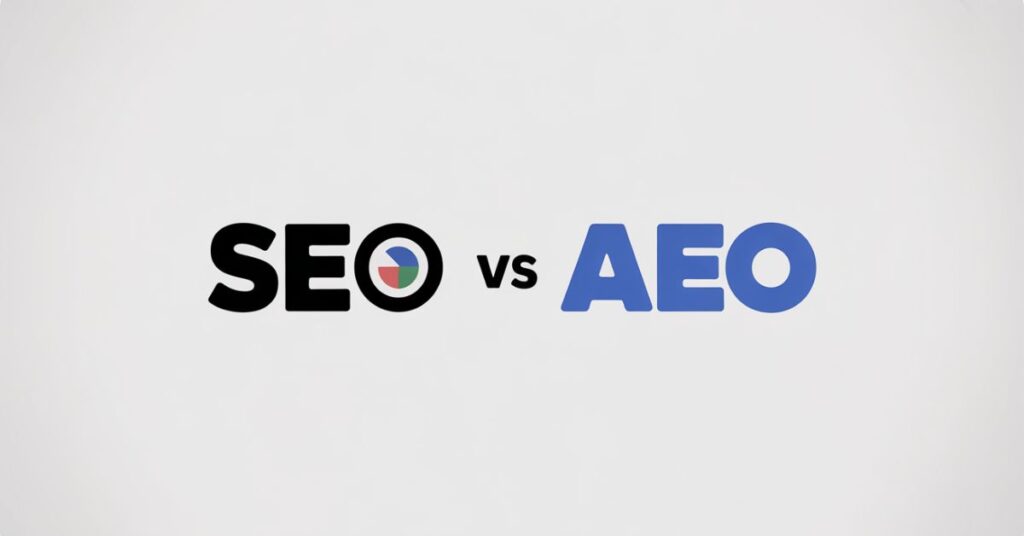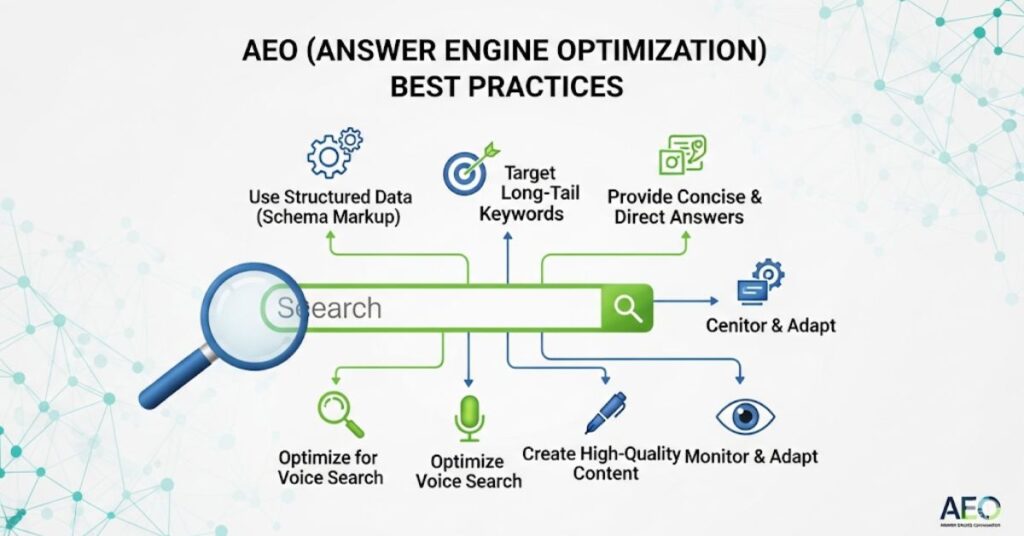Search engines are evolving faster than ever, and so is the way we optimize content. Answer Engine Optimization (AEO) is the new frontier in digital marketing. Unlike traditional SEO, which focuses on ranking web pages on search engines like Google, AEO is about making sure your content becomes the direct answer to users’ questions—especially in AI-powered search platforms like ChatGPT, Perplexity, and Google SGE.
As more people rely on AI tools and voice assistants for quick, direct answers, businesses must adapt. This article explores 13 key trends that are shaping AEO in 2025, helping you stay ahead in the game and make your content more visible in the age of smart answers.
Trend 1: Dominance of AI-Powered Search Engines
AI tools like ChatGPT, Perplexity, Microsoft Copilot, and Google Search Generative Experience (SGE) are becoming primary sources for users seeking fast, reliable information. These platforms pull data from websites and summarize it into direct answers, often without linking back to the source.
To stay relevant, businesses must focus on crafting content that is structured, factual, and easy to understand—so AI can extract and use it. Optimizing your site for AI visibility is no longer optional in 2025.
Trend 2: Structured Data Becomes Non-Negotiable
Structured data helps search engines understand the content on a web page. In 2025, using schema markup (like FAQ, HowTo, Product, and Article schemas) is essential for appearing in AI-generated answers.
When you use structured data correctly, AI engines can pull rich information like steps, summaries, prices, and reviews directly from your page. Tools like Google’s Structured Data Testing Tool and Schema.org can help you implement this easily.
Trend 3: Entity-Based Optimization Takes Center Stage
Entities are things like people, places, brands, and concepts that search engines use to understand meaning. Google now prioritizes content that clearly connects to entities, not just keywords.
To optimize for entities, include specific names, locations, and relationships in your content. Use tools like Google Natural Language API or InLinks to identify important entities and build content around them. This helps answer engines connect your content to broader topics.
Trend 4: Growth in Zero-Click and Voice Search
Many users now get answers directly on the results page without clicking on any website. Voice search through smart assistants like Alexa, Siri, and Google Assistant is also on the rise.
To compete in this space, write clear and concise answers at the top of your articles. Use headings like questions (e.g., “What is AEO?”) and provide short, fact-based answers in the first few sentences. This boosts your chances of being selected for zero-click and voice responses.
Trend 5: Trust Signals and Author E-E-A-T
AI search tools favor content that comes from trusted and knowledgeable sources. E-E-A-T stands for Experience, Expertise, Authoritativeness, and Trustworthiness.
In 2025, including the author’s name, credentials, and links to authoritative sources is essential. Use citations and avoid clickbait. Show transparency by listing sources and updating your content regularly.
Trend 6: Visual and Multimedia Answers Rise
AI tools are beginning to include images, videos, and infographics in their answers. This means you can no longer rely on just text.
Create videos for YouTube, add infographics to your blogs, and optimize images with alt text. Include transcripts for videos and captions for images. This makes your multimedia assets more discoverable by AI engines.
Trend 7: Topic Clusters Over Isolated Pages
Topic clusters group related content around a central theme. This approach helps answer engines understand your website’s context better.
Instead of writing many separate articles, build a hub page with subtopics linking back to it. For example, a hub page about “Digital Marketing” can link to articles on “AEO,” “SEO,” “Content Marketing,” and so on. Use internal linking to guide AI and users through your content.
Trend 8: Fresh, Real-Time Content Wins
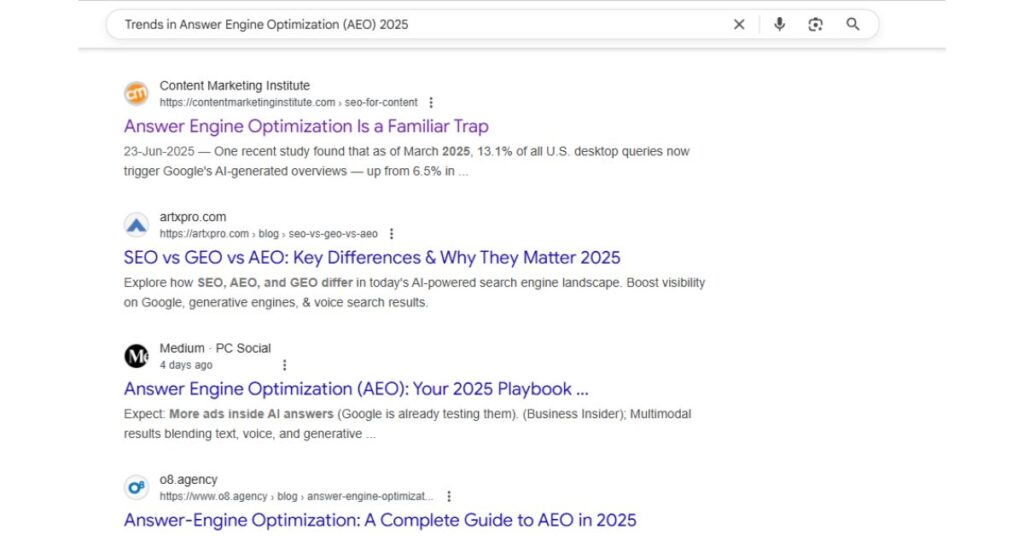
AI tools prefer up-to-date information. Content that includes recent stats, updated facts, and current examples performs better in answer engines.
Add the latest news, refresh old posts, and use dynamic content widgets when possible. Publishing frequency matters—make sure your blog or website is active and consistently maintained.
Trend 9: Intent-Based and Conversational Optimization
Today’s search queries are more conversational. People use natural language to ask questions, and AI tools understand these better than traditional keyword stuffing.
Use tools like AnswerThePublic and AlsoAsked to discover real questions people are asking. Then write your content in a way that answers these clearly. Use a friendly, conversational tone to make your content sound more natural.
Trend 10: Brand Voice Matters in AI Answers
As AI gets better at mimicking tone and style, having a consistent brand voice is becoming important. Whether your tone is formal, casual, or expert-level, make it uniform across all platforms.
A unique voice makes your brand recognizable even in AI-generated answers. This increases brand recall and trust among users.
Trend 11: Tracking AEO Becomes a New Challenge
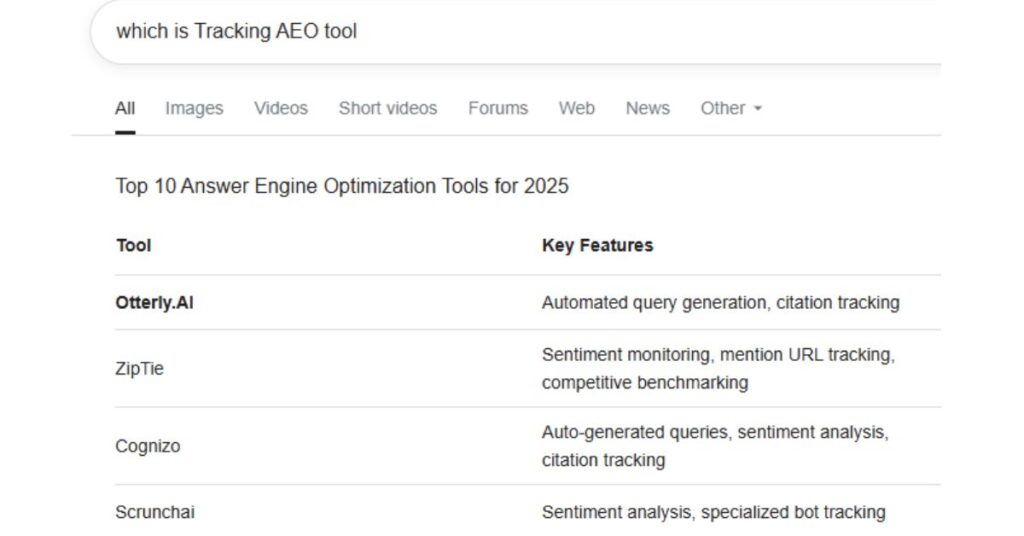
Unlike SEO, AEO is harder to measure. AI platforms often don’t show traffic sources or click-throughs.
To track AEO performance, create a manual spreadsheet to log your brand mentions across AI tools. Use GA4 to set up custom traffic channels like “Answer Engine Traffic.” You can also use tools like ChatGPT, Perplexity, or Bing Chat to test if your content appears in responses.
Trend 12: Industry-Specific AEO Techniques
Different industries require different AEO strategies:
- eCommerce: Use Product schema and include clear product benefits.
- Healthcare: Highlight certifications and use medical references.
- Finance: Use data-rich content with citations from credible sources.
- Travel: Add local insights, reviews, and booking information.
Understand your audience’s common questions and structure your answers accordingly.
Trend 13: Preparing for the Future of AEO
AEO is still evolving. In the coming years, expect deeper personalization, smarter AI, and even more voice-based interaction.
To future-proof your strategy:
- Focus on high-quality, evergreen content.
- Stay updated with AI and SEO trends.
- Test your visibility on AI tools regularly.
Adaptability will be key to staying competitive.
Conclusion
The world of online search is changing fast. In 2025, AEO is the key to getting your content seen, trusted, and used by AI-powered platforms. By following these 13 trends, businesses can build stronger visibility, trust, and engagement.
Start optimizing now—not just for search engines, but for answer engines that shape the future of digital discovery.

